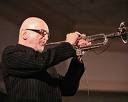
The Intersection is an occasional feature on JazzWrap that looks at artists that blend jazz with electronica (a tradition pioneered by none other than Miles Davis on such classic recordings as On The Corner).
This week's focus is Parov Stelar
This week's focus is Parov Stelar
Close your eyes and listen to the music of Parov Stelar, Austrian DJ, producer and head of Etage Noir Recordings, and you can easily picture yourself sitting in some posh boutique hotel lounge, sipping a pomegranate martini and thinking about that hottie you met at the club the night before. You invited him/her to join you here in the lounge this evening. Will (s)he come? Who cares... as long as you can groove to Parov's stellar blend of jazz- and swing-spiked house and breakbeat grooves.
Parov has four full-length albums (not to mention a "best of") and many EP's and singles. The most recent album is Coco, which continues to mine catchy samples from obscurity and revitalize them with modern beats and grooves.
JazzWrap caught up with Parov via email this week to find out why his grooves swing.
How did you get hooked on using jazz/swing samples?
Because the recordings from that time sound so great! You can feel the groove, and the mood is like nothing else in today's recordings. You can´t simulate it with a plug-in.
How do you select the samples?
Sometimes it feels like the samples actually select me : ) It´s not always so easy; you might already have the groove, but no sample fits. It´s a bit like picking up a woman in a bar -- it depends on whether the right one is there and wants you too.
Who are your favorite classic musicians?
Well, it´s obvious, I think some musicians influence me so much that you can hear it in my music -- not always just with the sound, but with their attitude or with the mood of their work. I think Art Blakey is a great example.
Who are your favorite contemporary acts?
There are so many, but right now you can find a lot of tracks by Riva Starr in my playlist.
What makes your latest album Coco your best album so far?
Coco is a mixture of all stylistic elements I´ve been using so far. A special kind of work exhibition (as there are not old but new works), and a collage of the different moods of my soul. It sums up the whole "Parov Stelar" vibe but also leaves enough perspective for upcoming things.
What's next for Parov Stelar?
I am working on a new EP which will be released in may. And, together with the A.G. Trio, I´m working on revitalising Etage Noir Special, the electro sublabel of my label Etage Noir. Also, in the next months, there will also be a lot of concerts and DJ-sets.


















